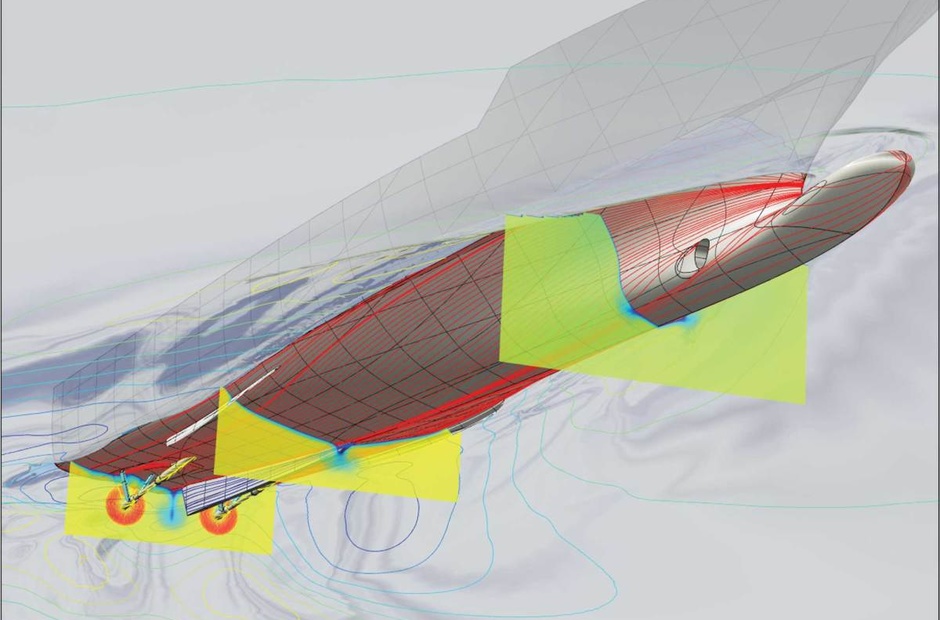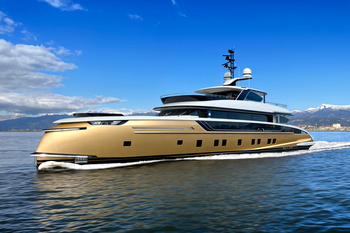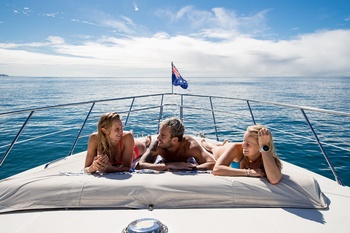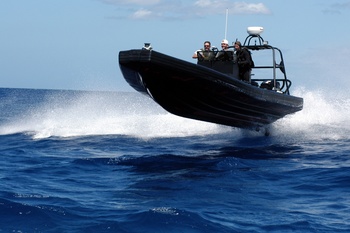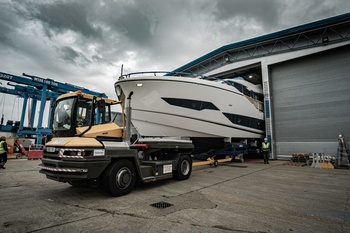The type of hull has a direct influence on how the boat behaves on the water and how it can be used. When selecting a yacht, the first step is to determine which hull type is suitable for your specific needs. In this article we will list the main hull types that exist today and show as clearly as possible how they differ from each other.
The two main case types, using the knife and the box as examples
Work on new hulls and improvements to existing ones is carried out with one goal in mind: to reduce the resistance of the hull when moving in the water. All hulls experience wave resistance, overcome friction forces, as well as form resistance, aerodynamic, inductive and splash resistance. Each design fights these forces in its own way.
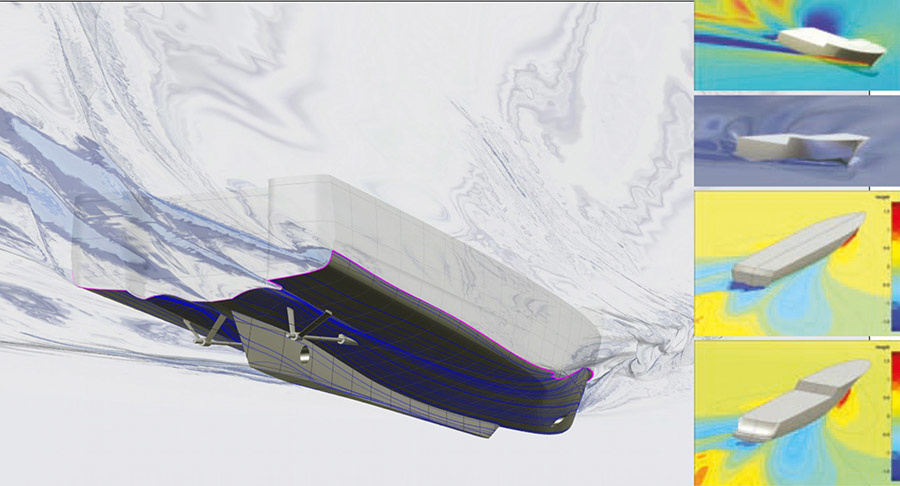
Using a knife and a box as examples, let's look at how different designs behave in water. Let's put them in a pool and pretend they are two boats. The knife moves easily through water, even in rough seas. But at the same time it does not float and its size does not allow putting something on it. With a box it is vice versa: it keeps on the water well even if you put a load in it, but on a wave it rocks, especially when standing still, and in motion such a hull will beat its entire width of the bottom on every wave.
Of course this is a very crude comparison but it accurately describes the way a hull behaves in the water depending on its shape and the challenges which face yacht designers. Intuitively, you want a narrow hull that moves easily through the water and creates the least amount of drag, but something boxy, barge-like would be good for accommodating large numbers of people comfortably.
The trick is to combine the advantages of «box» and«knife» into one hull.
The more in hull shape from«knife», the faster the boat is, the more from«box»- the more roomy and comfortable it is.
Conventionally speaking, «knife» is a planing hull, «box» is a displacement hull . These are the two poles in yachting design. In between are the so-called transitional hull types, and within them are subtypes depending on bottom shape and side lines.
Advantages and disadvantages of displacement hulls
Remember the school rhyme to memorize Archimedes' law that allows bodies not to sink in water? « A body stuck in the water is jerked free by the force of the water jerked out by a body stuck there». A body submerged in liquid has a force that is equal in magnitude and opposite in direction to the force of gravity acting on the volume of liquid displaced by the body.
In the case of displacement boats, Archimedes' force is the main force that acts on the boat. The balanced forces of Archimedes and gravity suspend the hull in the water column like a float. So when it moves, it is simply pushed through it by the momentum it receives from the propellers of the engine or the sail.

To make it easier for the boat to push through, the shape of the hull below the waterline is often rounded, smooth - so there is less water friction. They resemble perfectly polished sea pebbles over which water passes without any delay.
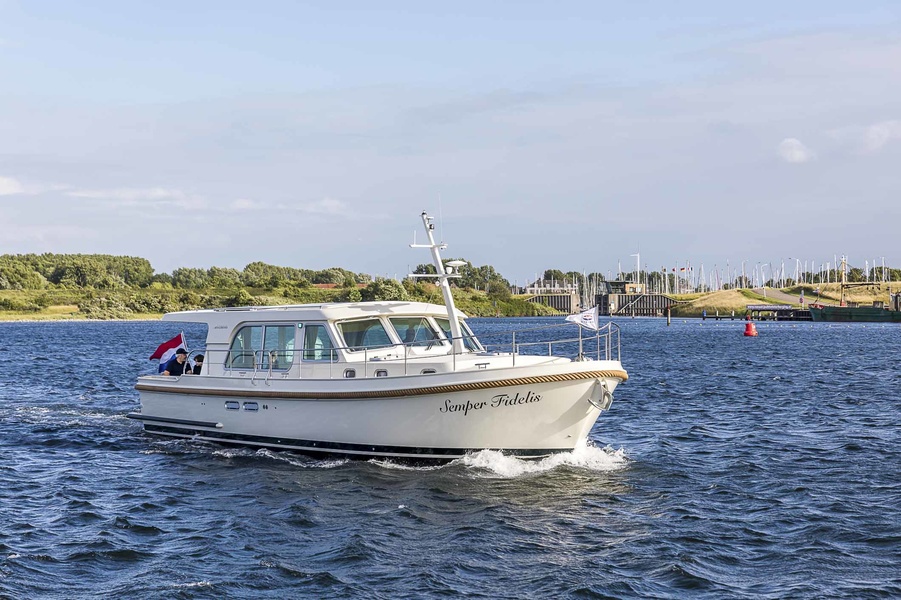
Only the bow of the yacht is made sharp, so it cuts through the water like a knife, not raising a big wave.
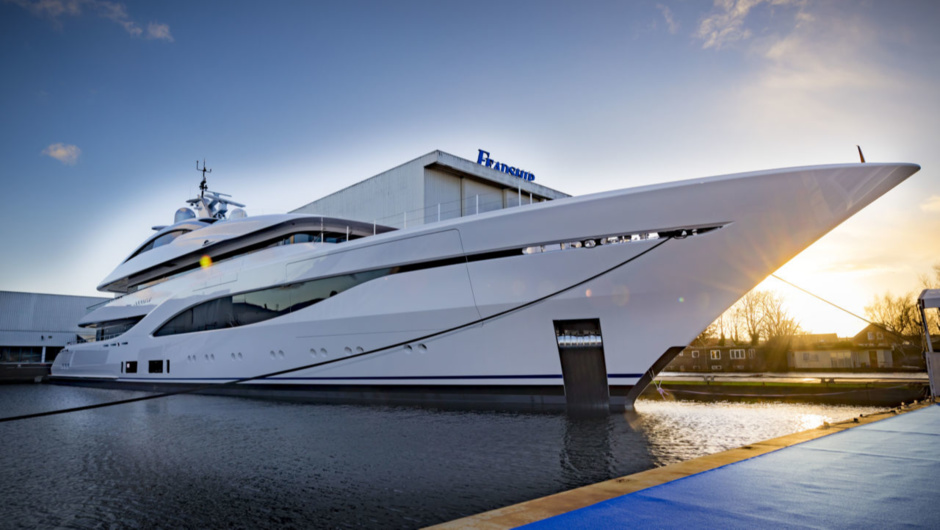
Even if, on rare occasions, the hull construction does include sharp cheekbones (when the contours resemble a cut glass), they are directed so that they cross the water line at the bluntest angle or not cross at all. After all, any unnecessary angles and notches create undesirable swirls of water, which brakes the boat.
The biggest limitation of a displacement hull is its speed. The formula to calculate maximum speed of a displacement hull would be as follows
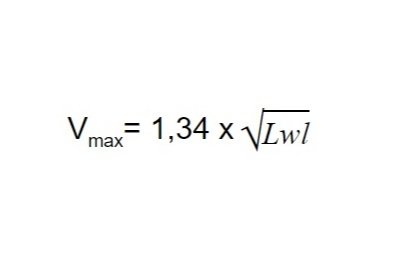
where Lwl is the waterline length of the vessel in feet;
Vmax- maximum speed of the ship in knots.
Simply put, the speed of the displacement hull is limited by its length.
» Of course, if a heavy-duty engine is installed, the boat will go faster, but most «of the extra power» will be spent on overcoming resistance, since the hull is not designed for high speeds and will start to fall «into the water, pushing the wave in front of it.
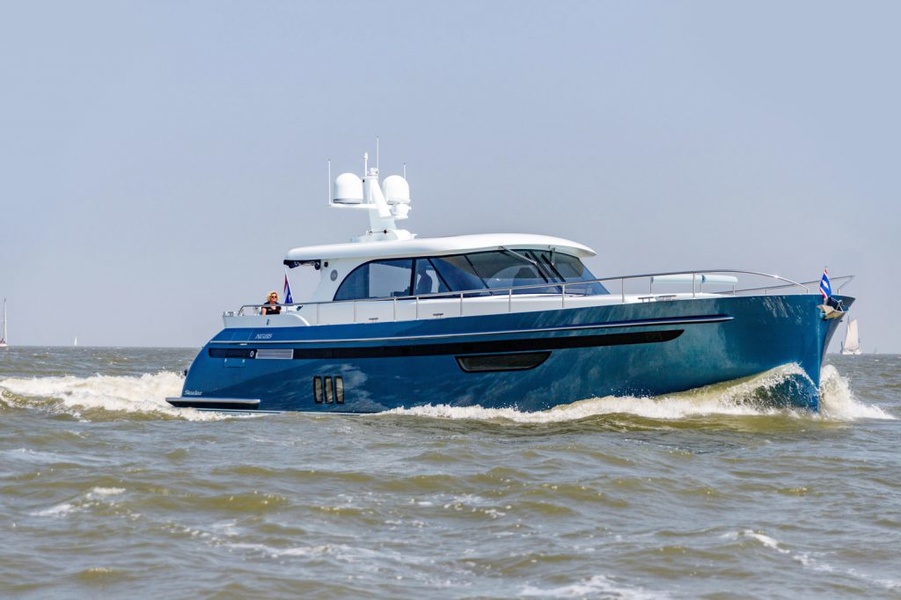
While the speed will increase linearly, the power required will increase in the cube. For example, to double the speed of a displacement boat, you need to increase the engine power by a factor of eight. To triple the speed, you need 27 times the power.
To reduce wave resistance, a bow bulb is used. It is located below the waterline and creates its own wave system, which overlaps the hull wave system and reduces its impact.

Displacement boats are greatly inferior to planing boats in terms of speed when comparing similar size vessels.
But herein lies the big advantage of a displacement boat: it is fuel efficient and provides comfort for long distance cruising and crossing.
The low speeds of displacement hulls greatly reduce the skipper's ability to avoid an approaching storm or thunderstorm. At low speeds, it is more difficult to pass the surf. You also won't be able to maneuver between waves, which could make crossing in bad weather much safer and easier.
Another feature of displacement hulls is that their draft is usually greater than their planing counterparts, which limits the ability to cut through shallow water.
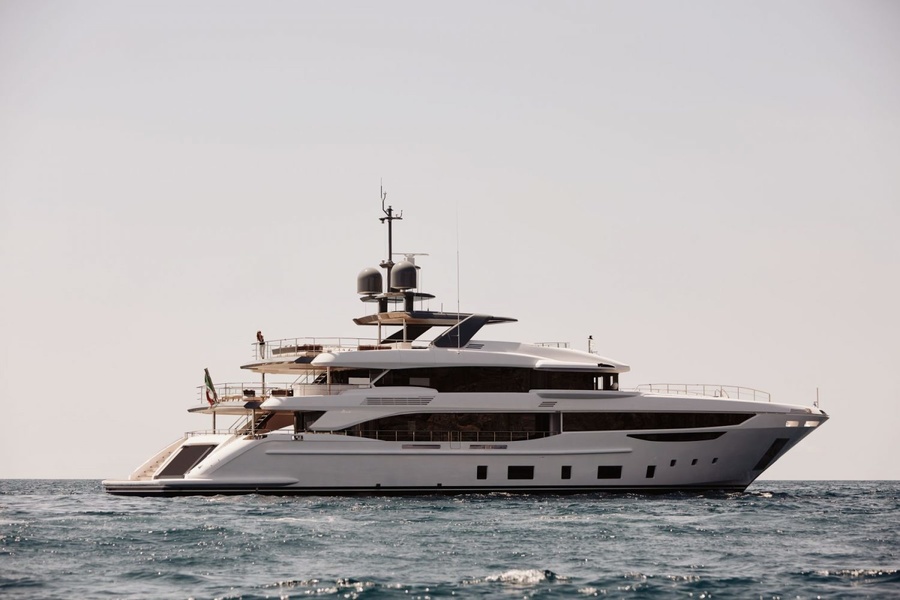
The center of mass is below the waterline, making the yacht less susceptible to wind. A well-designed yacht with a displacement hull is much easier to hold against the wind at low speeds than a similarly planing one.
PLANING YACHTS CAN THEORETICALLY OUTRUN BAD WEATHER, BUT IF YOU DONEVERTHELESS, IF YOU DO GET CAUGHT IN A STORM YOU'RE MUCH MORE LIKELY TO END UP ON A DISPLACEMENT HULL.
For longitudinal stability on a wave rocking the boat sideways, a properly chosen ratio of hull length to hull width is enough. For example, in the case of boats 6-12 meters long, the hull length should be 3.5-4.75 times the width.
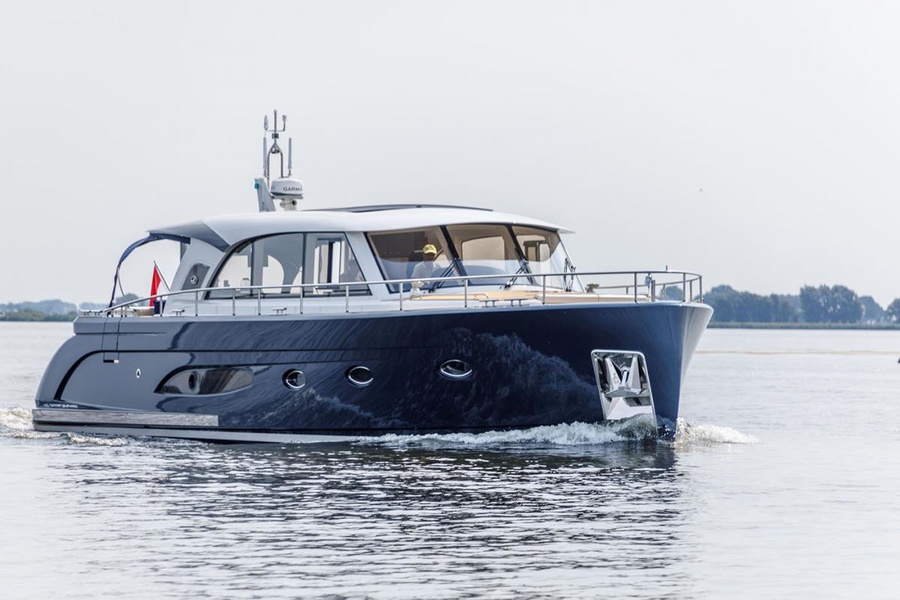
A displacement boat navigates smoothly in the water without pitching in the stern (pitching the hull longitudinally to the appropriate side), so you can travel on it even in bad weather.
She'll be fine not only on-board but also on the keel, which will cause her to bow and stern at the same time.
And you don't need to put a lot of extra effort to keep the boat in its normal position. There can be a lot of cargo on board (including passengers) and it can be distributed relatively chaotically around the boat. Although the occurrence of roll (pitch) or trim to bow or stern is undesirable, even then the boat will be able to continue running adequately. The weight of the boat itself does not matter either. This is not the case with a planing boat.
Advantages and disadvantages of planing hulls
Unlike the displacement hulls, planing hulls are not only harnessing Archimedes' power, but also the hydrodynamic lift and water resistance. Simply said, a gliding hull is designed to work like a wing during the ride.
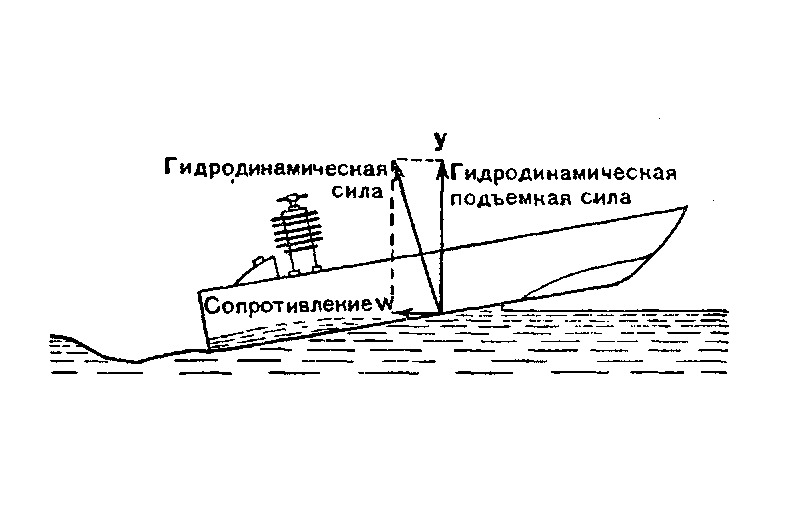
When a certain speed is reached, the boat overcomes the hump of resistance, its bow is lifted and the bow does not touch the water.
Instead of pushing through the water column like in displacement boats, the gliding hull begins to glide on the surface.
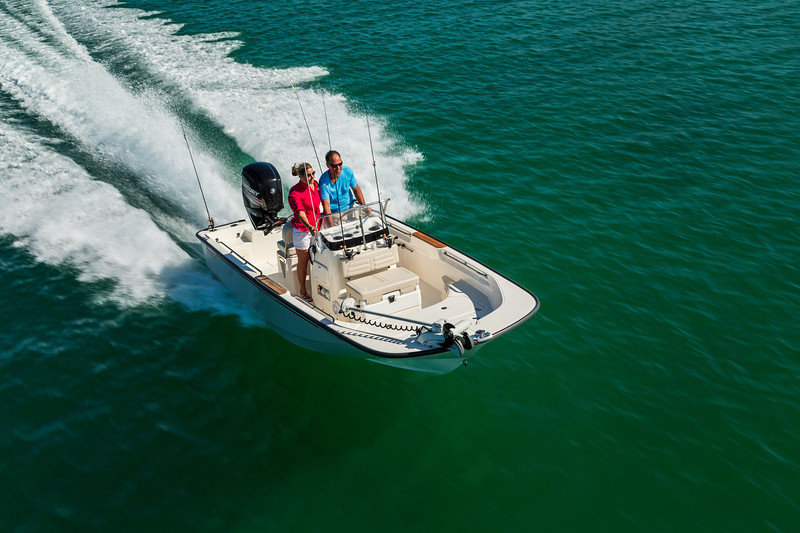
The displacement of the part of the hull that remains in the water is kept to a minimum. It reduces the water resistance and allows the boat to develop high speeds.
The price for the ability to chase is the need for a more powerful (and therefore expensive) engine compared to displacement models of the same length.
At least 35hp for every ton of displacement is required to get on plane.
For planing yachts, the total weight of the boat and its distribution is important. The centre of gravity should be shifted towards the stern, but not too much. The bow of the boat should be easier to lift, but at the same time it should not fly too high, so that the boat does not lose its balance and turn over (besides, it will block the helmsman's view). Also, do not overload the stern, as this will increase the surface area submerged in water and the water resistance will only increase. Accordingly, the necessary lifting force, which is able to outweigh this resistance and bring the boat to planing, will also increase. The boat may not have enough motive power to reach the required speed.
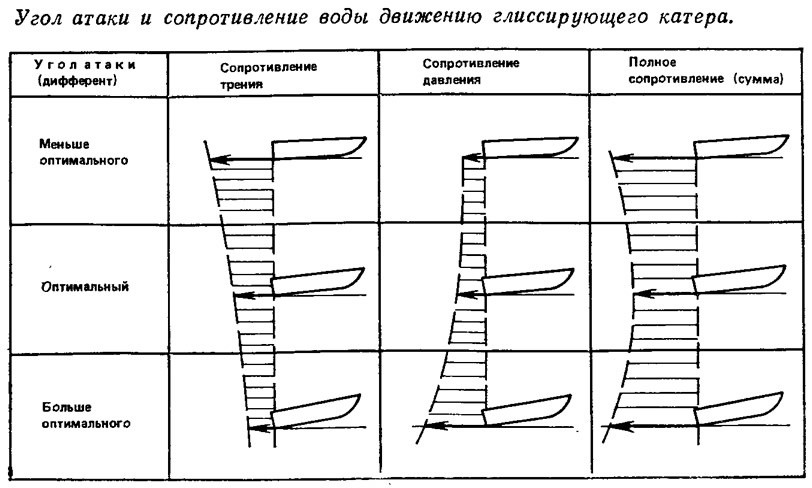
Gliding boats are reluctant to sail on a hydrofoil. They are designed for heavy stern roll with the waves just about half way down the bow and not touching the water. When such a boat falls into the water with the entire keel, the water flows around her differently.
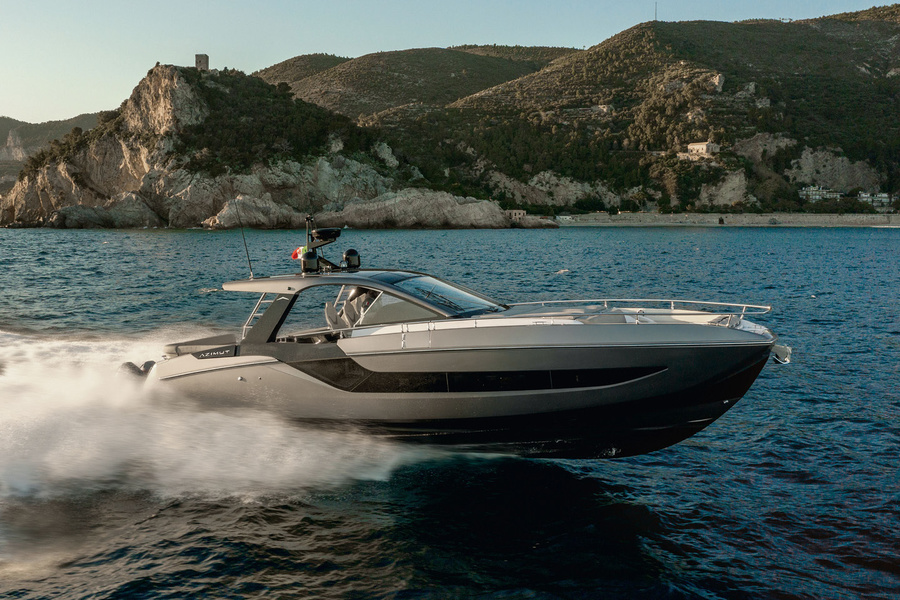
As a result, to reach even a small speed of which a displacement model of the same length can also reach, the engine of a gliding boat needs 8-10 times more horsepower for each ton of displacement than the displacement model engine.
Before (or after) planing, a glider's engine is inefficient and uses much more fuel than a displacement boat's engine in the same situation.
To illustrate, you can imagine bouncing a rock that has been let loose in the water «pancake» (or «frog»). As long as its speed doesn't drop below a certain point, it bounces off the water again and again. But after the braking, gravity and drag are greater than the hydrodynamic lift, and the stone, having lost the ability to propel itself forward, goes to the bottom. Approximately the same thing happens with a planing boat hull (adjusted by the fact that unlike the rock, the Archimedean force still saves it from sinking).
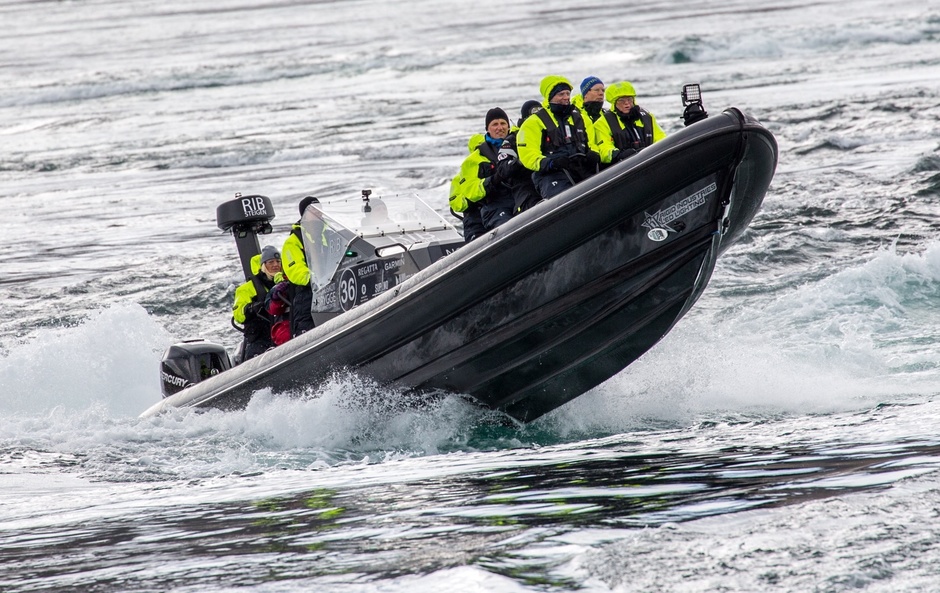
«Because of the great voracity of», gliding boats are less suitable for long voyages. Besides, useful volume inside gliding yachts is much less than that of water-displacement yachts, nothing can be placed in a sharp bow, and the whole aft part is occupied by powerful engines.
Different Shapes of the Bottom of Gliding Yachts
Not only can hydrodynamic lift be harnessed on planing boats, but they can develop sufficient speed to do so. The special shape of the bottom also helps to lift the boat above the water. Both flatboats and boats with V-shaped hulls are suitable for this purpose.
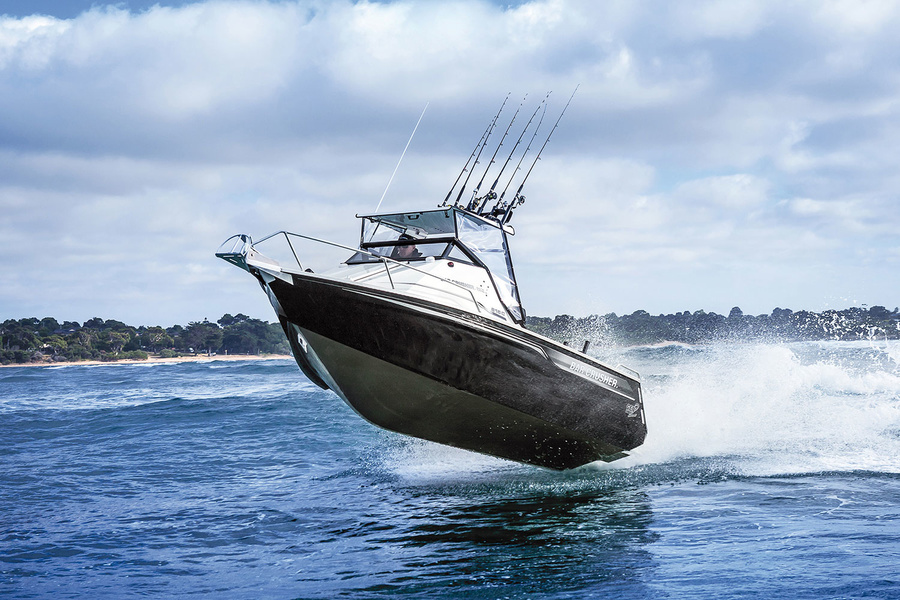
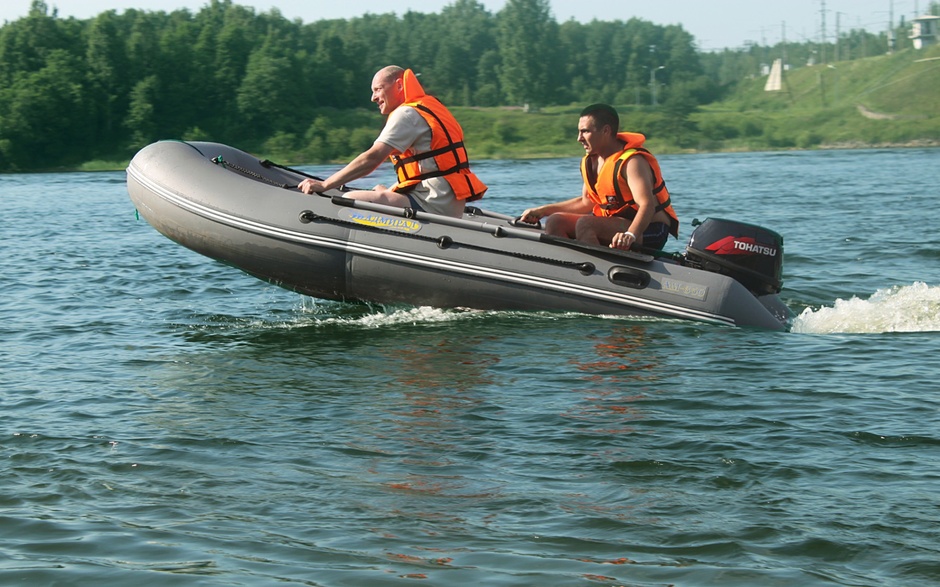
However, we'd like to note that plane boats are effective only in places where there is no big wave: flat bottom takes the whole force of the wave impacts on itself, it does not help to sail to the glider. Besides, flat-bottomed yachts are stable only on a straight keel and with the increase of a roll the restoring force decreases unlike the displacement hulls.
Among offshore gliding yachts the common type outlines are «deep V». The angle at which the bottom of such a hull rises from the keel to the sides (keeliness) is greater than 20°, while with«ordinary» V hulls this parameter is usually 10-17°. The angle that occurs between the hull and the water during movement is 1.5-2 times greater in boats with«deep V» than in flatboats. With such outlines you can comfortably, without a serious loss of speed to sail in planing mode even in rough seas (as long as the wave is passing or onboard), while less advanced models can start «jumping» on waves with unpleasant for passengers shaking («delfin»).
Advantages and disadvantages of deep V hulls
The main disadvantages of hulls with«deep V» are high water resistance before going to planing mode (the boat is harder to accelerate) and less stability during anchoring and when cruising than hulls with less deadrise. Because of stability issues, large planing motor yachts are most often made less keeled to be more comfortable.
Another «tiphack», which is used to help the hull to planing is the installation of so called «radars». Radars are elongated prisms with a rectangular cross section which are attached to the bottom along the hull. In this way peculiar projections with sharp edges are made on the bottom. The bottom with transverse radials looks like a ladder with several steps.
The longitudinal radars sweep the water currents sharply away from the keel towards the board distributing them along the bottom and shifting them towards the stern. At sufficiently high speed, the radars create additional lifting force which helps the boat to plane and prevents it from turning over when the boat rolls. In addition, they increase stability and reduce pitching, that is, they can work on the principle of a keel. The disadvantage of longitudinal sideboards is that in case of a high speed wave, the hull receives hard blows, since the pressure is concentrated on the projections. Nevertheless, they are obligatory to be installed on hulls of «deep V» type.
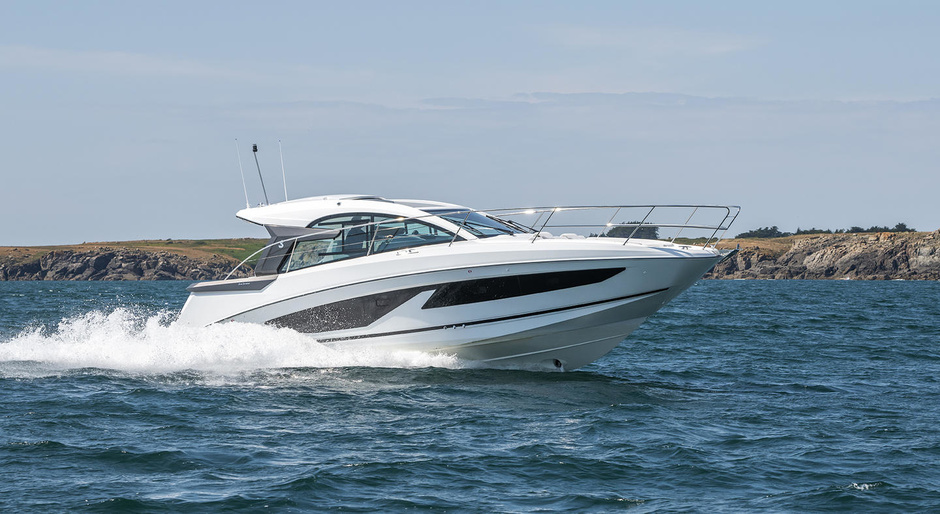
Cross bars allow to improve the stability of the boat during planing. So it is less dependent on the position of the centre of gravity. To reduce the force of hydrodynamic impact «steps» transverse redan on the oncoming wave, it is made arrow-shaped. This way, the pressure builds up gradually.

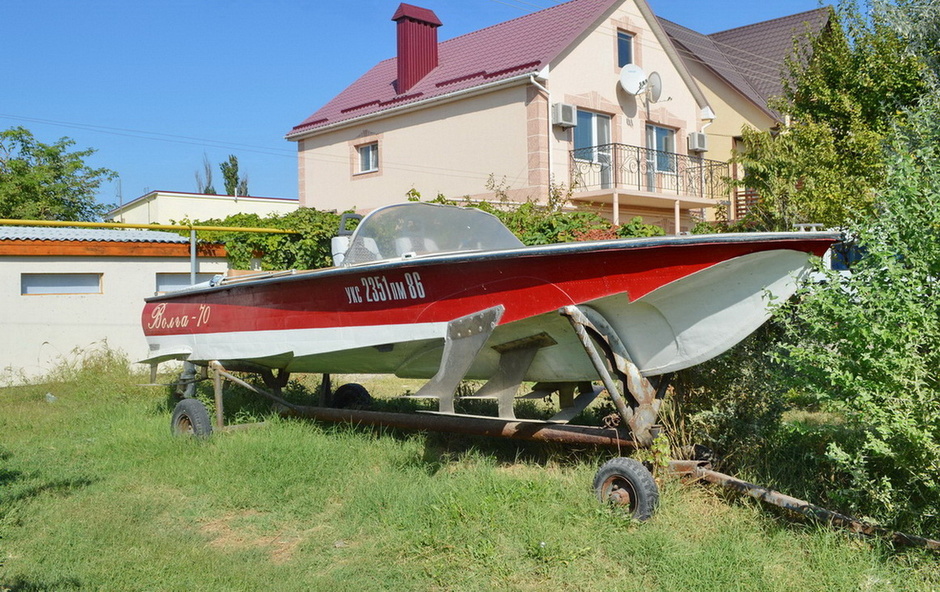
Why do gliders need trim tabs and transom plates?
To adjust the angle of lift of the bow of a planing boat over water help «trimmers» and«transom plates».
The former adjusts the position of the hinged motor or the swivel-tilt motor column. This avoids excessive trim to the stern. A tilted bow can deflect the boat left and right («yawing»), making steering difficult. This is especially undesirable when riding on a wave. Boats are also more likely to dolphin in this position.
Transom plates, as their name suggests, are plates installed underwater on the transom. They act as a hydrofoil. By means of an electro-mechanical or electro-hydraulic drive, their angle relative to the hull can be adjusted. This allows to obtain properly directed additional lifting force in the aft part of the hull and as a result, it is easier to come to planing or to level out the roll.
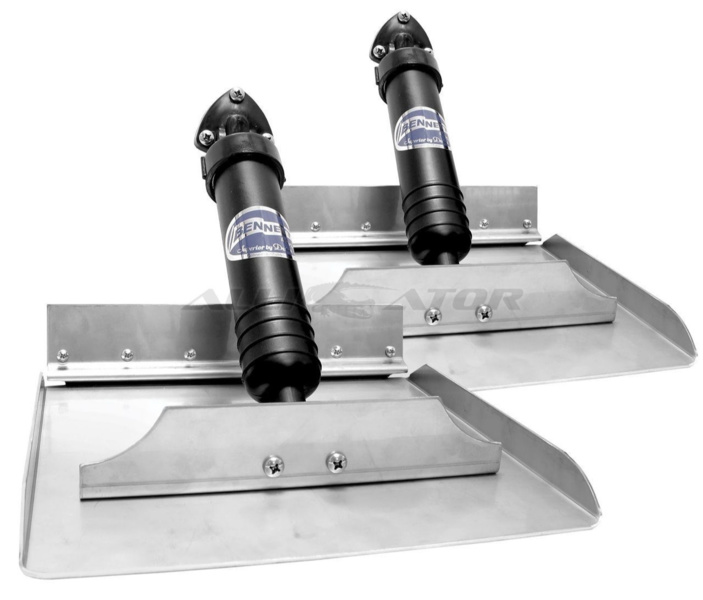
A nice bonus of transom plates is that they allow you to reduce the engine speed, but still keep the planing mode. And it's not only friendly to engine, but also it saves fuel.
Transom plates are standard on many Bayliner , Sea Ray, Four Winns, Sunseeker , Princess, Fairline , Aquador , Azimut , Ferretti yachts . Hull Vane is a kind of transom hull plate which can also be used on Dynamiq yachts (though their hulls are not usually planing, but belong to type Fast Displasement, discussed below).
On modern models, interceptors are most often installed instead of transom plates. This system can be described as «blade in sheath». When necessary, «the blade» is lowered parallel to the transom, as if continuing it. That said, when the interceptor is not needed and removed, it, unlike the transom plate, does not create additional water resistance. In addition, the interceptor starts working 5 times faster than a conventional transom plate. The most famous manufacturers of boat interceptors are Zipwake, for yachts - Humphree.

The optimum trim for each boat is determined by experience.» For boats with transverse radii, it will always be less, since they should «rest on at least one of them. Also, the center of gravity, and with it the best position of any planing boat changes as the fuel tanks are emptied.
Driving at high speeds, especially in rough seas, is often accompanied by copious splashing of water from under the hull in all directions. To avoid water splashing on the deck, there is also a device called a splash-back or splash-deflector. It is a ledge or padding on board. They work in the same way as the longitudinal rears. However, they are installed not only on planing boats but also on displacement ones. So, when mounted in the bow they can help to damp the wave in front of the stem.
Are there sailing yachts with a planing hull?
Yesterday all sailing yachts were hulled to water-displacement which meant that only motor boats could plan. But in the modern world that's not true any more. Naval architects learnt to create hulls for sailing boats which shape and weight make it possible to planing even without auxiliary hydrofoils in spite of slow (for standards of motoryachts) speed. On average, 45-50m² of sails for each ton of displacement are required for assured planing.
The classes of «Flying Dutchman», «Finn» and SB20 are good examples of plane-towing sailplanes. The Pogo 44 and J/99 are planing cars. All of them distinguishes the flat bottom at aft.
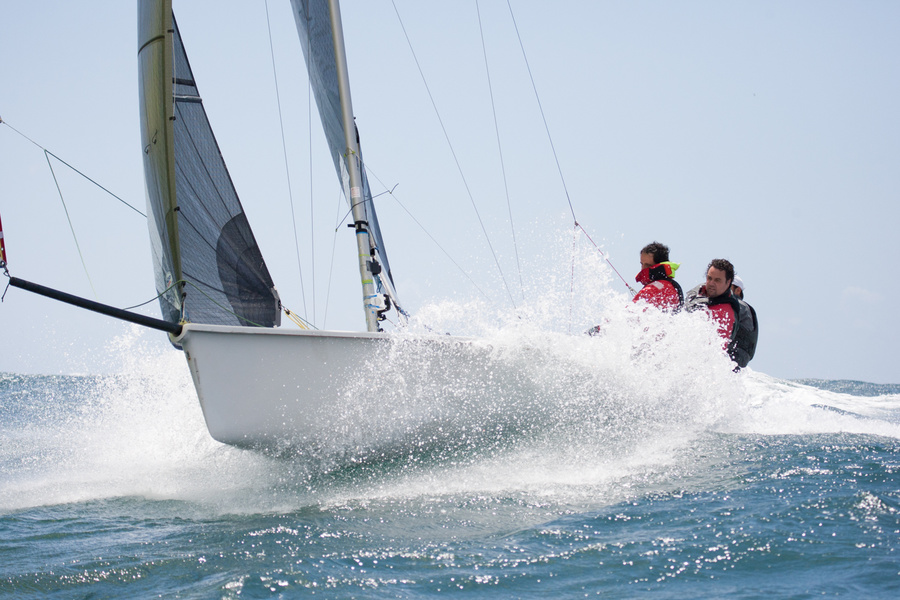
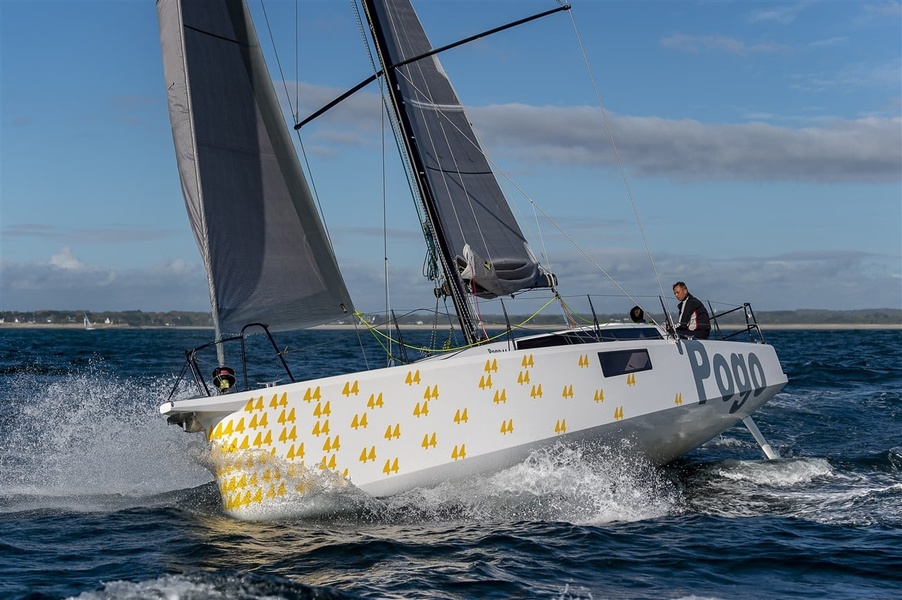
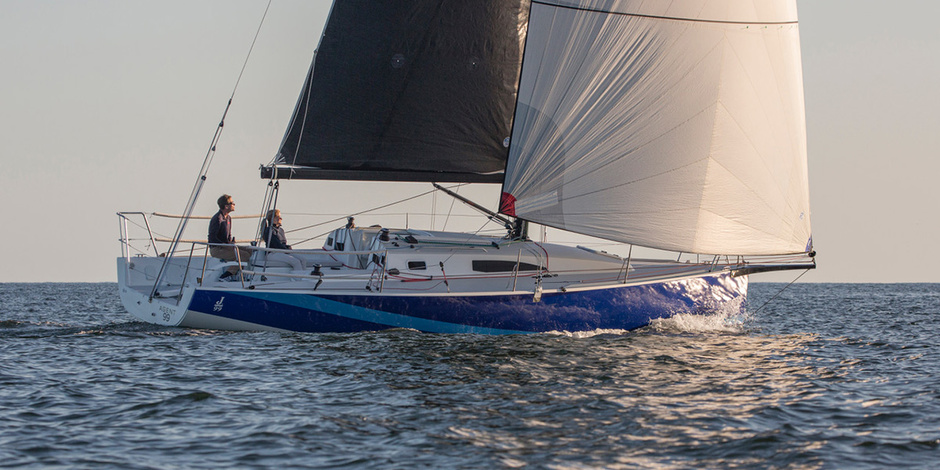
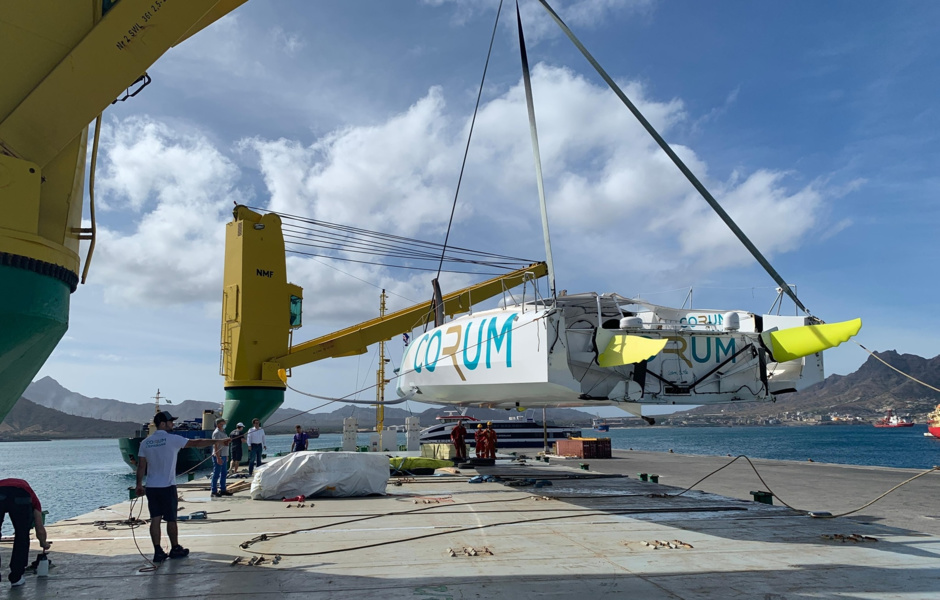
Advantages and disadvantages of the semi-displacement hulls
A kind of compromise between two extremes: fast but voracious planing boats and slower but more economic displacement ones.
They are roomier, more stable on the wave and generally more comfortable than gliding yachts, but faster than displacement yachts.
They are generally used in the same way as displacement boats. Moreover, because of the lower draft in the displacement mode, a displacement yacht needs less engine power and uses less fuel. While a displacement boat needs all the engine power to reach 10 knots in a 16.7 to 19.8 metre yacht, a comparable semidisplacement yacht needs only about 15% power to do so.
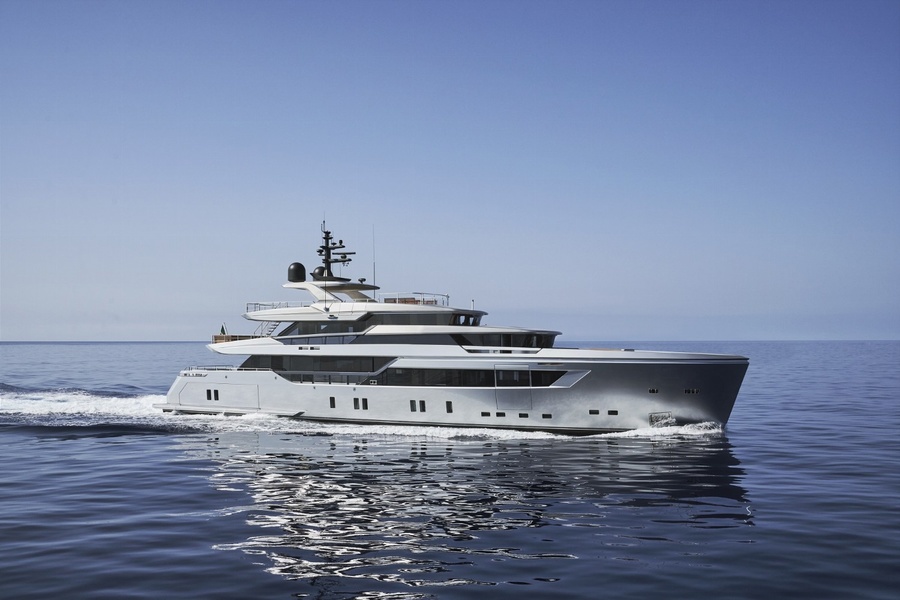
It allows the crew of such a boat to significantly «throttle up» when they need, for example, «to escape» from an approaching storm, (almost) like a planing yacht. The crew of a displacement boat has no such option. Conversely, should bad weather suddenly strike, the passengers are much more comfortable and safer on a half-displacement yacht than on a planing yacht due to the greater wave stability. This is also their advantage when anchoring.
«This hybrid nature of a Semi-displacement yacht is possible because they are capable of sailing in the so called» transitional mode. This is also the case with planing hulls, when the lifting force starts to increase creating a trim at the stern, but not yet enough to lift the bow off the water surface.
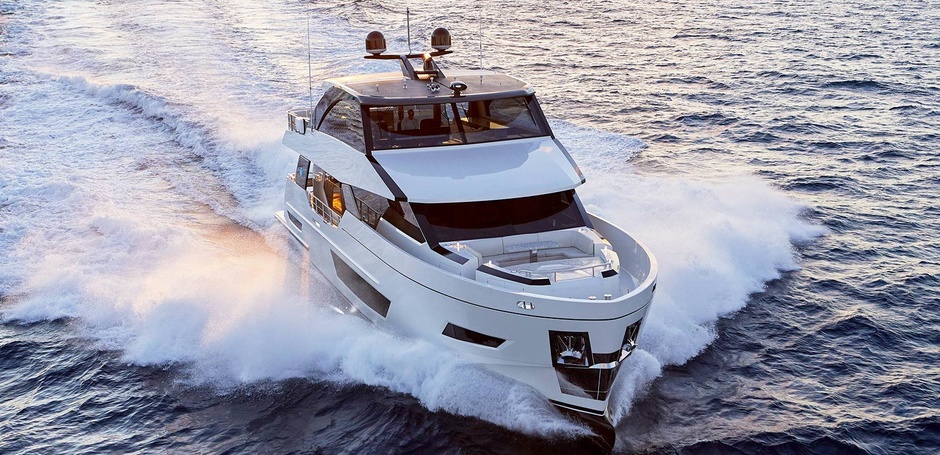
«If one draws a graph of the water resistance versus boat speed, one can see the characteristic hump»: the resistance is increasing up to a certain point, but then it begins to decrease gradually.«A displacement boat cannot achieve enough speed and gain enough lift to even get close to the hump». Gliding boats can overcome it completely. Well, semi-displacement hulls «get stuck» on the hump«» or if«get over» it's insignificant in comparison with planing boats.
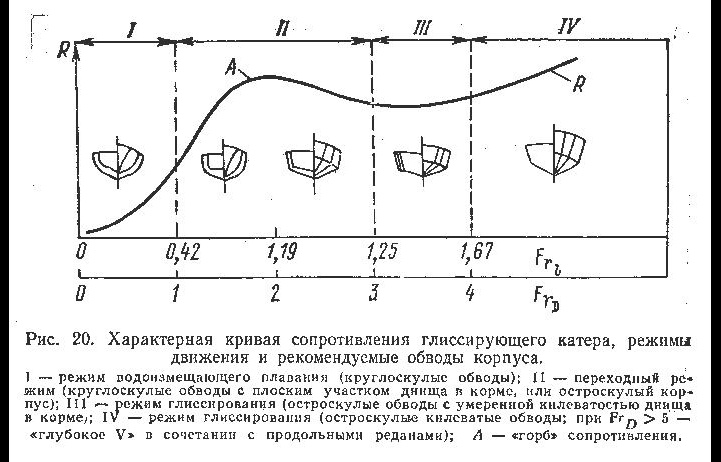
Due to the greater range of available speeds, in general a long cruise on a semi-displacement yacht will be more dynamic than on a comparable displacement yacht.
«However, it is worth remembering that the fuel consumption in transitional mode is the least optimal, so do not get carried away» on a semi-displacement boat.
So the boat creates a bow wave across the hull, which, if the hull were planing, would eventually help to gain sufficient lift. But since a semi-displacement hull is not capable of planing, it keeps trying to climb this wave, which requires an enormous expenditure of engine power. Among boats, semi-displacement boats are the mythical Sisyphus who are forever pushing a huge rock up a mountain but never make it to the top.
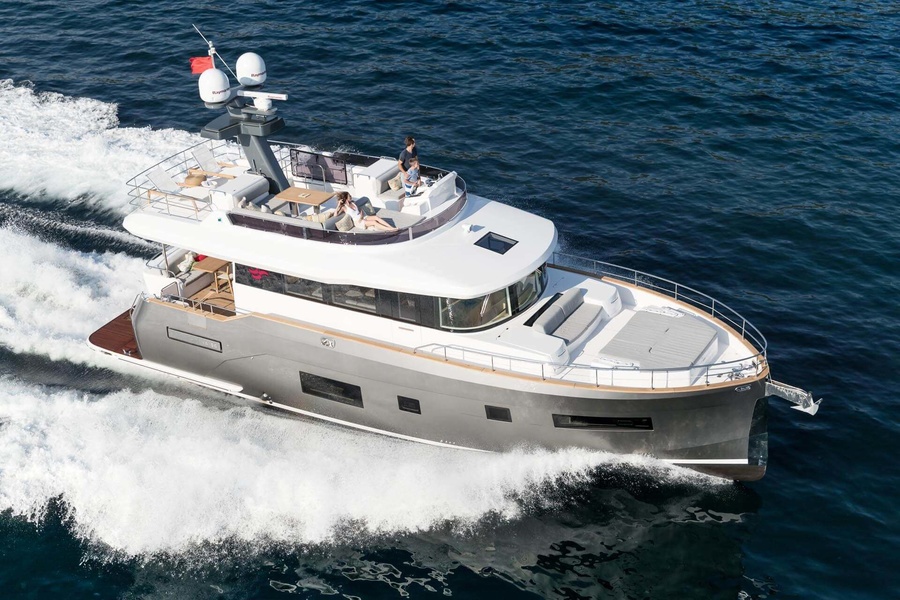
In terms of hull shape, the Semi Displacement boats retain the rounded bottom at the keel, vertical pointed bow and minimal waterline movement that is characteristic of the Displacement boats. But the displacement hull is generally wider. While displacement boats are 3.5 to 4.75 times longer than width, semi-displacement boats are only 2.8 to 3.2 times wider.
On the whole, the range of optimum values of length and width of semidisplacement hulls is smaller than that of displacement hulls.
They cannot be too compact, as they need to be able to develop sufficient speed to reach«the hump» of resistance. And at the same time they can't be too big, because in that case the weight grows disproportionately too and the boat becomes too heavy for the necessary speeds.
Semi-displacement projects are similar to planing boats due to flattened bottom in the stern area which helps to accumulate lifting power, and sharp cheekbones which let such boats «pseudoglide». Like gliding boats, they also need fairly powerful engines that are capable of accelerating the boat to the desired speed.
To make it easier for semidisplacement boats to do so, the designers took care to keep the hull as light as possible, which results in lower draft. It is visibly shallower than that of a displacement hull.
Fast Displacement Hulls
Displacement hulls are slow. Semi-displacement hulls are inefficient in consumption of fuel at peak speeds. Full planing hulls at low speeds (and unstable on a wave). The Dutch naval architecture firm Van Oossanen tried to create something new and come close to the ideal, which would not have any of these significant problems. In 2009 the company officially introduced a variant of semi-displacement hulls, which the specialists called Fast Displacement, that is literally «high-speed displacement». Since 2017 such hulls can also be found on large superyachts.
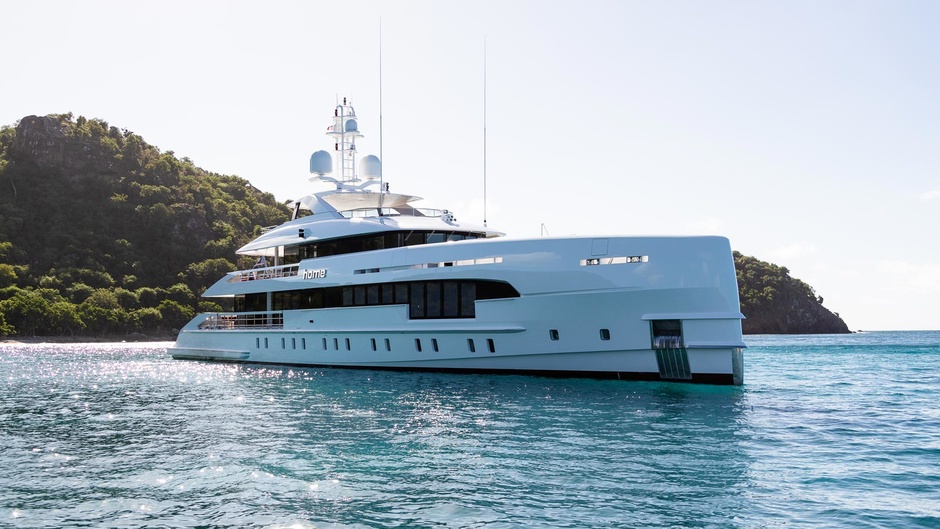
During the first tests at cruise speed of 13 knots, Fast Displacement hull showed the same performance in terms of wave resistance as similar displacement hull, but 40% better than semidisplacement hull.
Stability of such a boat with its shallow, rounded contours was equal to that of similar sharp-boned hulls although in theory it should be worse. And the range was increased by 1500 nautical miles at the expense of economical fuel consumption.
The latter was achieved largely due to the bow with the so-called «bulb» (from the French bulbe - «bulb»). This is a drop-shaped thickening in the underwater part of the hull, the use of which optimizes the fuel consumption by 12-15% due to its effect on the wave motion. Though, one should admit, bulb is not at all innovative. It was invented back in the beginning of the 20th century and during the whole period of time is used on displacement ships.
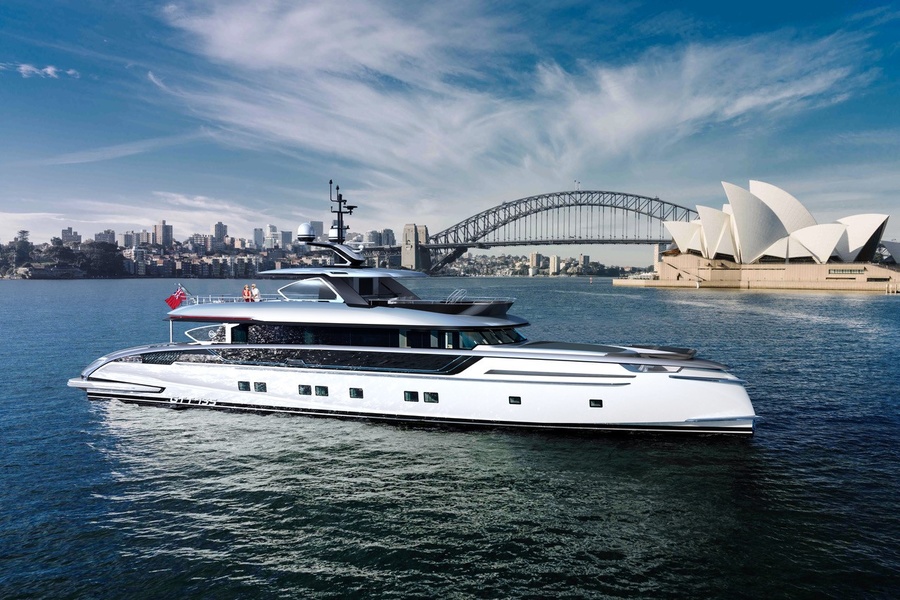
But the advantages of Fast Displacement hulls are not limited to speed and energy efficiency.
They are always much longer than other models of the same length and have 20-25% more deck area.
This is important not only for guests but also for the crew, as more space is allowed on the bow where crew quarters are normally located.
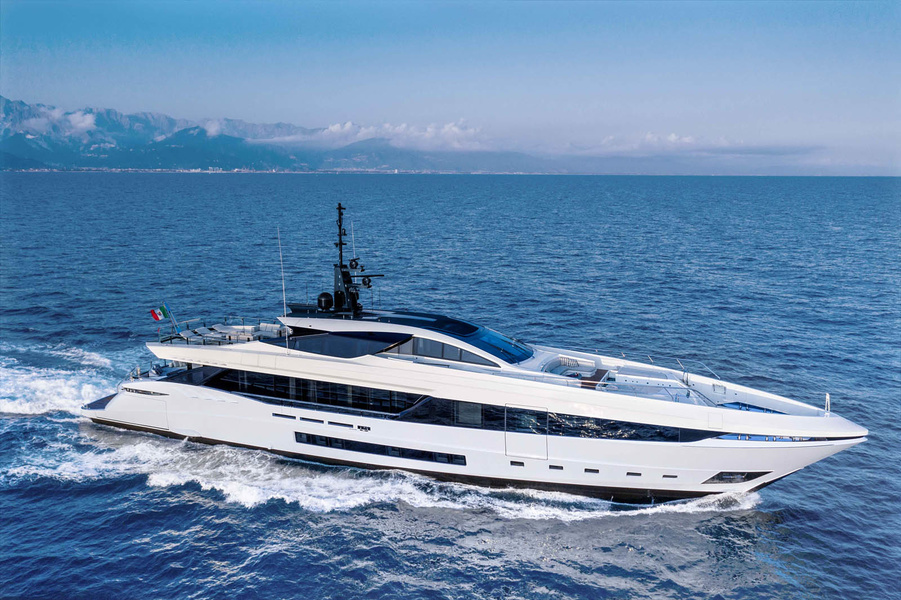
The construction of a round hull type Fast Displacement in steel or aluminum is a bit more expensive than building a boat with sharp cheekbones. This is due to the need for additional bending of the metal sheets.
However, later on the boat pays for these investments by reducing the cost of buying an engine and then fuel.
Characteristic modern yachts with a Fast Displacement hull are most Dynamiq models. Also you can find it in Heesen , Wim van der Valk and OvermarineMangusta, Sunseeker.
A few words about multihulls
Catamarans, like monohull boats, can be either displacement, planing or semidisplacement.
Regardless of the type of hull, they will be more stable compared to monohulls as the lift forces are distributed over a much wider area. But if a catamaran decides to roll over, it will do so very quickly due to the same large area and the resulting «floatation».
The water resistance of a catamaran is less than that of a very wide monohull despite its two hulls instead of one. Therefore, a displacement catamaran will have a noticeably better fuel consumption overall.
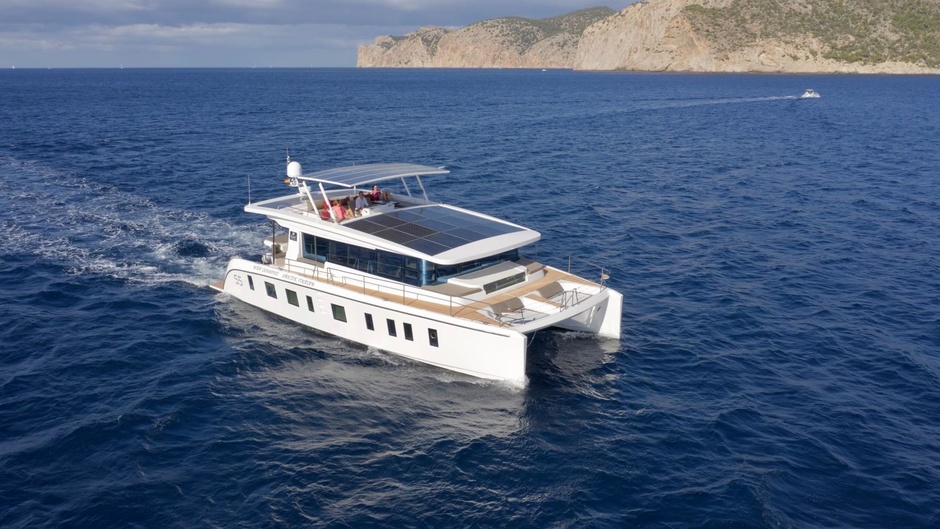
A catamaran will need slightly more power to be planing, but after that, it will be even slightly more fuel efficient than a monohull. Overall, fuel consumption of planing boats is more or less the same regardless of the number of hulls.
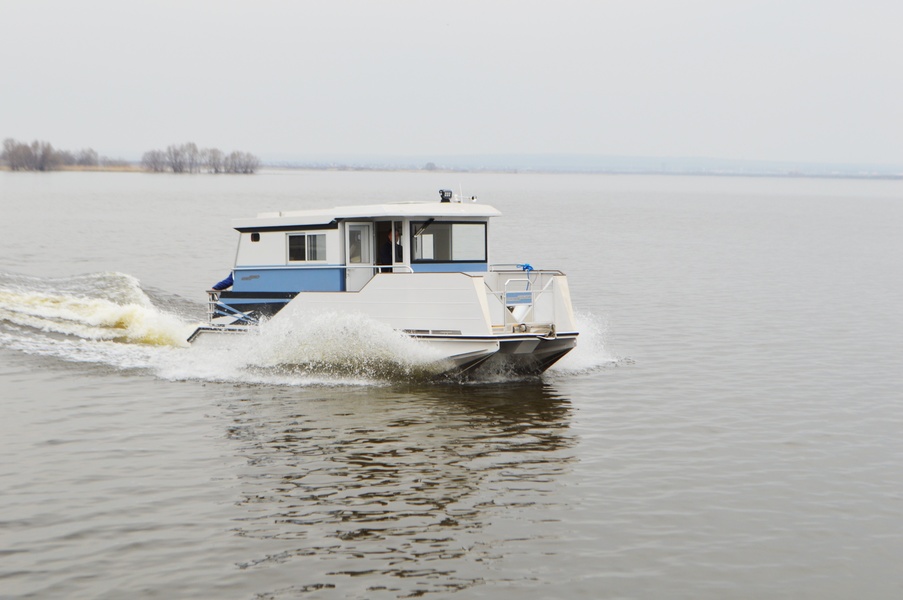
Summary .
When choosing the type of boat start from your goals. If you are looking for a yacht that can be raced by wind in the daytime and do not plan long crossings, look at models with a planing hull. Displacement boats are ideal for large expeditions away from the marina. In case you are a fan of comfort but can not imagine yachting without a possibility to run up at least once in a while, you should choose from the semidisplacement boats.
The number of hulls in a boat depends on your needs in volume of living space and your personal preferences. Yes, a catamaran is always more expensive than a monohull of the same length, but it has a better habitability. But mono-yacht is the best solution if you are going to travel to arctic and antarctic latitudes, because one hull is much easier to heat.
Displacement, semi-displacement and planing hulls. Comparative table
| Displacement | Semidisplacement | Gliding | |
| Froude number* | Up to 0,42 | 0,6-1,1 | 1,1+ (ideally 2+) |
| Average power requirement (hp per 1 ton) | 5 | 10-40 | 60+ |
| Longitudinal fullness ratio** | 0,56-0,64 | 0,63-0,68 | 0,68-0,76 |
| Position of center of value on horizontal axis of ship counting from bow to stern*** | 50-54% | 53-57% | 58-64% |
| Initial stability | Below | Above | Highest due to large and heavy stern. |
| Dynamic Stability | Above | Below | Lowest |
| Seaworthiness | Stable on a wave. Great fuel capacity on board with no fear of loss of seaworthiness. Suitable for long cruises. | More stable upon a wave than a planing boat. | In rough seas it is not comfortable to be on board. But in good weather the water resistance is minimal and so the hull itself generates minimum waves. |
| Speed | Depends on the length of the hull, but in general relatively slow. When trying to go beyond the maximum, increasing motor power is not justified. | Speed range is higher than that of displacement yachts. | Maximum . |
| Fuel consumption | Consistent | More economical than a displacement boat when cruising, but less than optimum in transitional mode. | Inefficient at low speeds. Optimized after coming to planing, but still higher than that of displacement. |
| Internal volumes | Maximum | More space aft. | All the stern (30-40% of the total volume of space) is occupied by engines, and the pointed shape of the hull prevents its dispersal. |
*Relativeboat speed, which is calculated based on her waterline length and actual speed.
The Froude number indicates what the drag of a boat of a certain length will be at a certain speed. The higher the Froude number, the greater the resistance, the more powerful the engine must be and the greater the fuel consumption. Froude number allows to compare boats of similar length and different speed characteristics, to calculate which speed mode is more efficient for the boat of desired length, to understand how increasing the length will affect the boat's consumption while maintaining its speed characteristics.
**Ratio of the displacement to the waterline length of the boat and the underwater area of the midship. One can imagine that the underwater part of a boat is placed in a straight cylinder with the same shape and area at the base as the midship portion. The ratio of the displacement to the volume of this cylinder will give you the figure, which is oneof four such indicators of the fullness of the contours. The smaller the ratio, the more elongated and sharp the hull shape. A fuller hull shape gives you greater lifting power but slower speed.
The center of magnitude is the point at which the resultant gravity, Archimedes' force and other forces which keep the boat afloat are applied. This point is at the center of the volume of the submerged part of the hull. In order to ensure that the design waterline is the same as the actual waterline and that there is no list or trim, the centre of gravity and the centre of magnitude must be in a straight line which is perpendicular to the water plane and the plane of the design waterline. If the centre of gravity is offset from the centre of magnitude horizontally, it is initially tilted aft or forward.Because the bow of the hull is sharper, in the vast majority of cases the center of gravity and center of magnitude of the vessel is shifted slightly aft relative to the midship spar

